
You get ready to sleep, turn off the lights, turn on the alarm and are about to get into bed- when you feel a sudden urge to see a full moon. You put on your slippers, walk to the window, draw the curtains and peek out. You tilt your head, adjusting your angle and walk to the edge of the window. You still can't see the moon. But in the moonlight, you see a star shining very brightly. South of that ambient source you see three stars in a row- Orion!
One of the many nights, you will sit to draw and map these constellations on the unused side of a used paper. And while you connect these silver dots, you might wonder how they look up close.
Stars in a constellation may appear close together, but go on a 3D tour, and one can see the light years of distance between them. These designs of Light Shades are an attempt to show how stars in these four constellation are spread out in 3D, while maintaining how we see them in 2D. The position of the stars have been morphed to fit in 3 parallel planes, after turning the constellation/asterism by between 60 degree to 90 degree.
They could be placed on walls or similar surfaces with a light source behind them. The material could be translucent (paper / frosted glass) or even opaque (porcelain) to create a more dramatic night light effect.
Following are some renders to aid visualisation.


From left to right:
Leo(constellation), Big Dipper(Asterism), Orion(constellation), Cygnus(constellation)
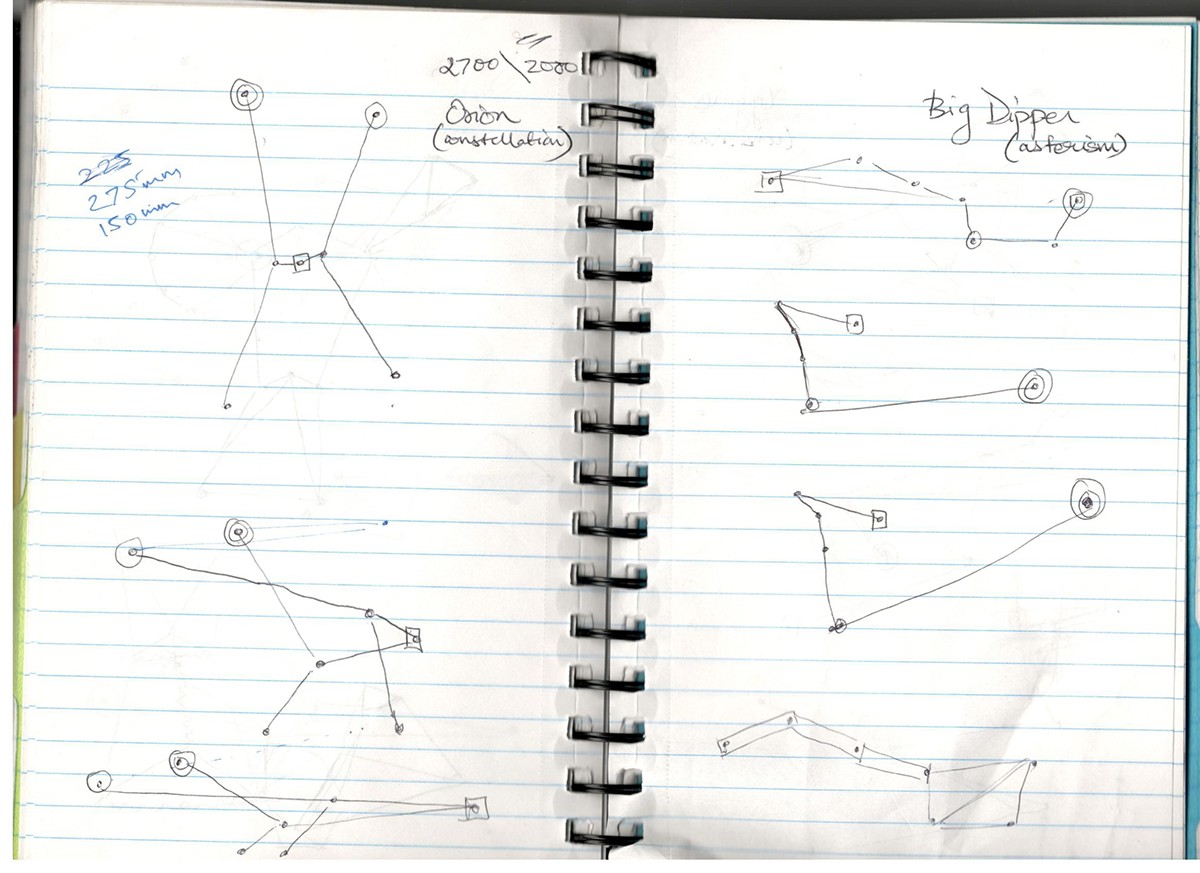
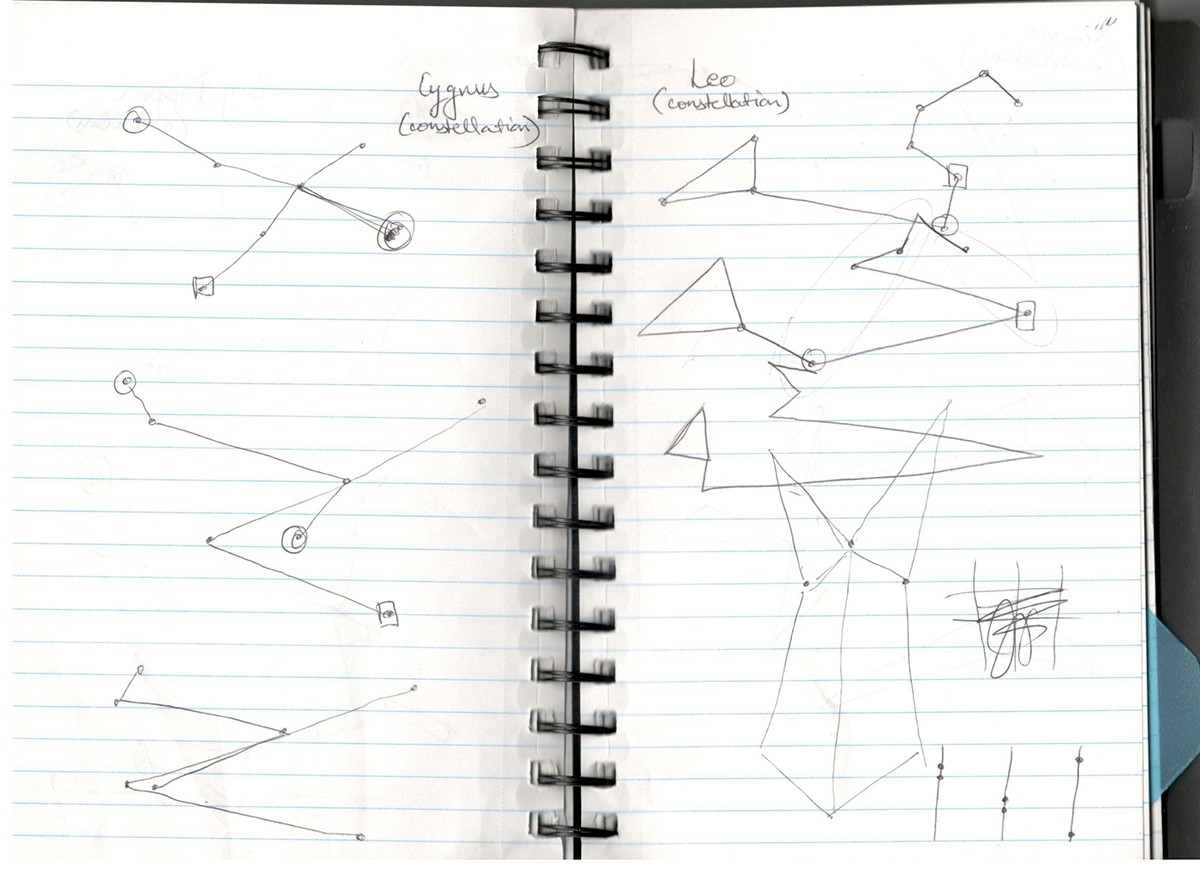
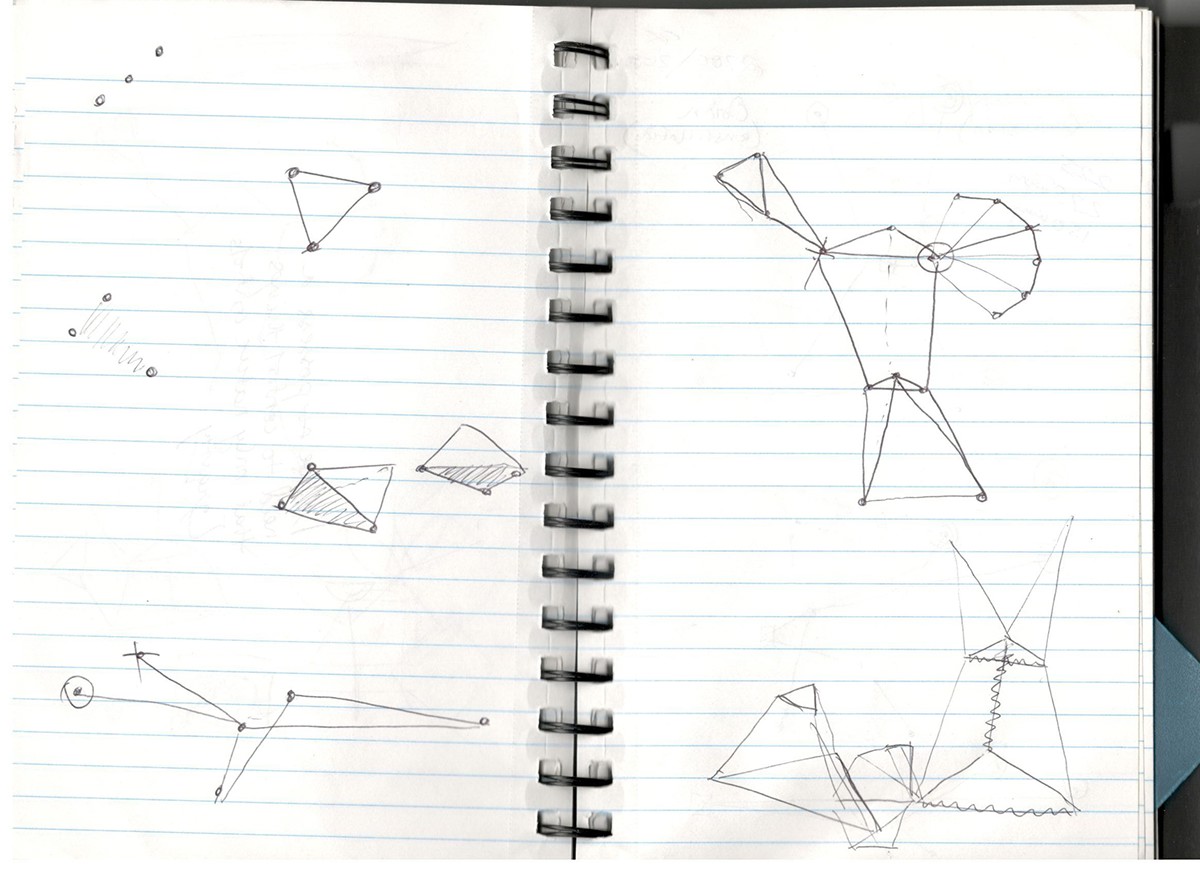

These froms are made from sets of triangles in many planes, put together to form constellations/asterisms in 3D.

Cygnus- Constellation

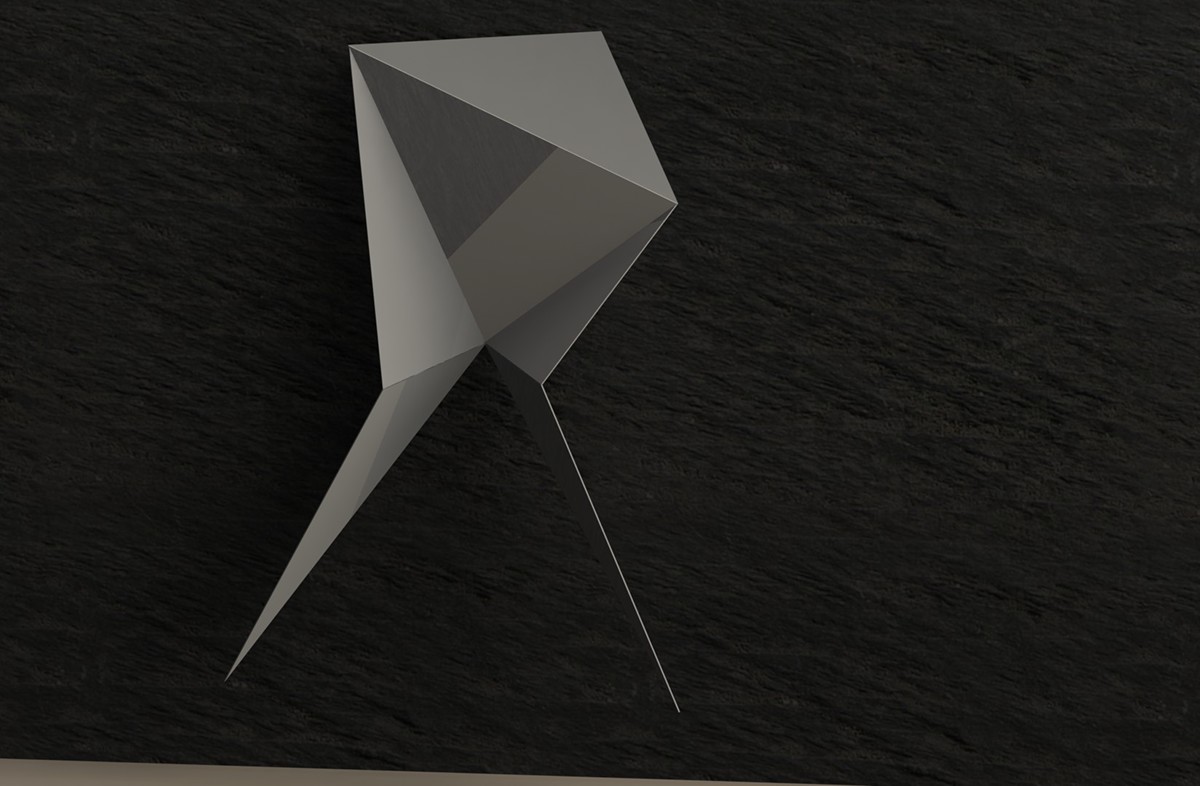
Orion- Constellation


Big Dipper- Asterism
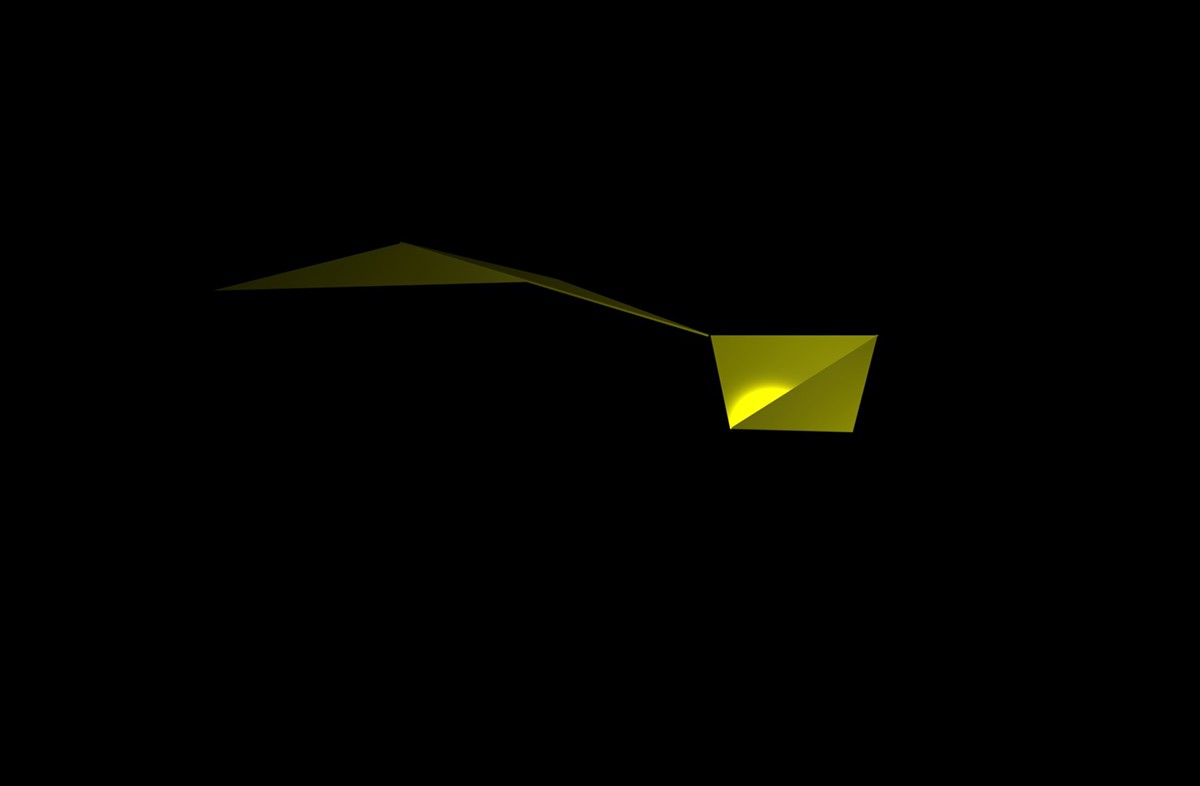

Leo- Constellation


